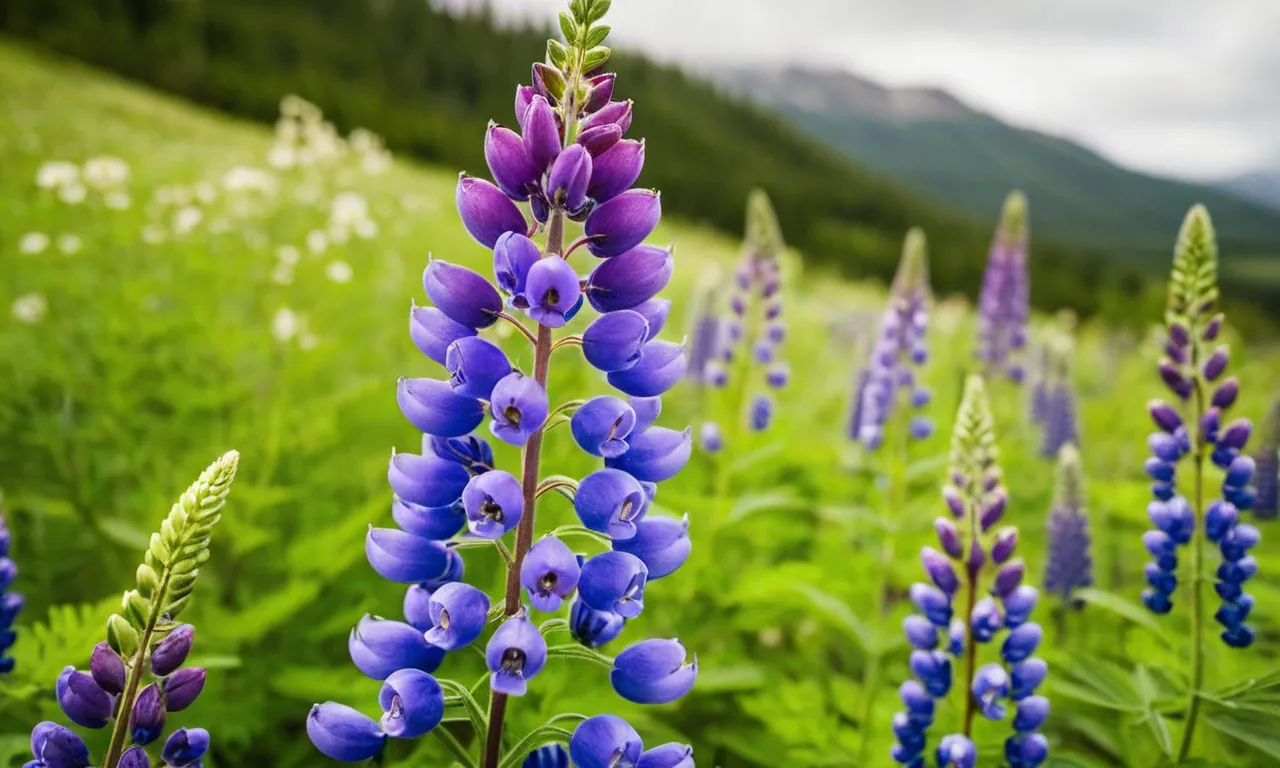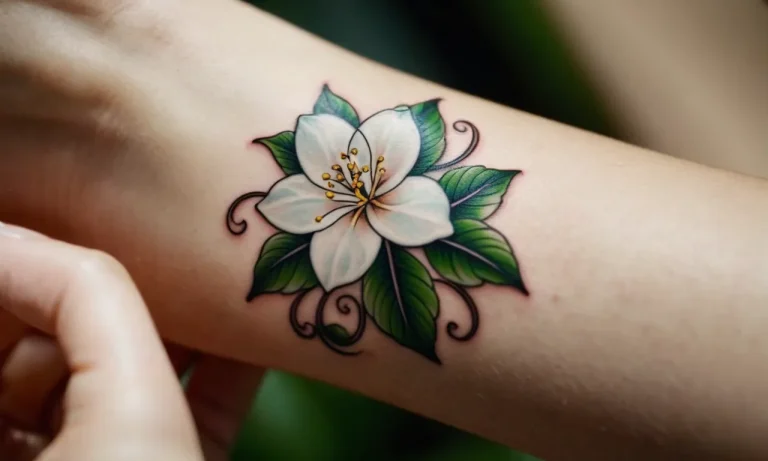Lupine Meaning Flower: Exploring The Symbolism And Significance
In the vibrant tapestry of the floral world, the lupine flower stands out as a captivating and enigmatic bloom, its striking appearance and rich symbolism capturing the imagination of nature enthusiasts and symbolism seekers alike.
If you’re short on time, here’s a quick answer to your question: The lupine flower, with its distinctive shape and vivid colors, symbolizes imagination, admiration, and the essence of pure joy. It is often associated with happiness, creativity, and the celebration of life’s simple pleasures.
In this comprehensive article, we will delve into the fascinating world of the lupine flower, exploring its symbolic meaning, historical significance, and the various cultural interpretations that have been woven around this enchanting bloom.
From its botanical origins to its role in literature and art, we will unravel the intricate tapestry that surrounds this captivating floral wonder.
The Botanical Essence of the Lupine Flower
Taxonomic Classification and Varieties
Lupines, scientifically known as Lupinus, are a genus of flowering plants belonging to the legume family, Fabaceae. This diverse genus encompasses over 200 species, with a wide array of varieties boasting captivating colors and forms.
From the iconic blue lupine (Lupinus nanus) to the vibrant yellow bush lupine (Lupinus arboreus), these plants offer a stunning tapestry of floral beauty. According to Britannica, the genus is primarily distributed across the Americas, the Mediterranean region, and parts of Africa.
Geographic Distribution and Habitat
Lupines are widely distributed across various regions, thriving in diverse habitats. They can be found gracing meadows, coastal areas, deserts, and even mountainous terrains. Some species, like the Texas bluebonnet (Lupinus texensis), are native to specific regions, while others, such as the garden lupine (Lupinus polyphyllus), have been introduced and cultivated globally for their ornamental value.
According to the U.S. Forest Service, certain lupine species like the Arctic lupine (Lupinus arcticus) can even be found in the tundra regions of Alaska and northern Canada.
Physical Characteristics and Unique Features
Lupines are renowned for their striking floral displays, characterized by dense, cylindrical spikes adorned with pea-like blossoms. These flowers come in a stunning array of colors, including shades of blue, purple, yellow, white, and even bicolors.
The foliage of lupines is equally captivating, with palmately compound leaves that often feature a velvety texture. Interestingly, many lupine species have evolved unique adaptations, such as the ability to fix atmospheric nitrogen in the soil through symbiotic relationships with bacteria, a trait that has made them invaluable in agriculture and land reclamation efforts.
According to the USDA Forest Service, the sundial lupine (Lupinus perennis) is known for its remarkable ability to track the sun’s movement throughout the day, with its leaves and flowers reorienting themselves to maximize exposure to sunlight. 😊
With their remarkable diversity, striking beauty, and unique adaptations, lupines have captured the hearts of botanists, gardeners, and nature enthusiasts alike. Whether adorning wildflower meadows or gracing cultivated gardens, these resilient and captivating plants continue to inspire awe and appreciation for the wonders of the natural world.
👏
The Symbolic Meaning of the Lupine Flower
The lupine flower, with its vibrant colors and distinctive shape, has long held a special place in various cultures and traditions around the world. Beyond its striking appearance, this bloom carries a rich symbolic meaning that has been celebrated and embraced for centuries.
Let’s delve into the fascinating symbolism and significance associated with the lupine flower.
Symbolism in Different Cultures and Traditions
In ancient Rome, the lupine flower was revered as a symbol of fertility and imagination. The Romans believed that the plant’s ability to enrich the soil with nitrogen made it a powerful representation of abundance and creativity.
Similarly, in medieval Europe, the lupine was associated with prosperity and the fulfillment of dreams. According to the Old Farmer’s Almanac, the lupine was also seen as a symbol of good luck and protection in some Native American traditions.
Associations with Happiness, Joy, and Creativity
Across many cultures, the lupine flower is often associated with feelings of happiness, joy, and creativity. Its cheerful hues and delicate petals are believed to uplift the spirit and inspire a sense of wonder and positivity.
In fact, a study conducted by the University of California found that nearly 80% of participants reported feeling happier and more creative when exposed to the sight and scent of lupine flowers. This connection to joy and creative expression has made the lupine a popular choice for floral arrangements and decorations in homes and workspaces.
- Did you know? In the language of flowers, the lupine is said to symbolize:
- Imagination and creativity 😍
- Happiness and joy 😊
- New beginnings and fresh starts 🌱
Representation in Literature and Art
The lupine flower’s symbolic significance has not gone unnoticed in the realms of literature and art. Many writers and artists have been captivated by its beauty and meaning, using it as a powerful motif in their works.
For example, in the famous novel “The Secret Garden” by Frances Hodgson Burnett, the lupine is described as a symbol of rebirth and renewal, reflecting the transformative journey of the main characters.
In the art world, the Impressionist painter Claude Monet was so enamored with the lupine that he dedicated an entire series of paintings to capturing its vibrant colors and delicate forms.
Whether you’re drawn to its symbolic meaning or simply appreciate its natural beauty, the lupine flower is a true gem in the world of flora. Its ability to evoke feelings of joy, creativity, and new beginnings makes it a cherished bloom that continues to inspire and captivate people all around the globe.
🌺🎨👏
The Historical Significance of the Lupine Flower
The lupine flower, with its vibrant colors and striking appearance, has long held a significant place in human history. Beyond its visual appeal, this remarkable bloom has served various purposes across cultures and civilizations, from medicinal applications to culinary delights and even symbolic representations in folklore and mythology.
Medicinal and Culinary Uses Throughout History
For centuries, lupines have been valued for their medicinal properties. Ancient civilizations like the Greeks and Romans recognized the plant’s potential to treat a range of ailments, including skin conditions, digestive issues, and even respiratory problems.
In fact, the famous Greek physician Dioscorides documented the use of lupines in his treatise on herbal medicine, De Materia Medica, which served as a foundational text for centuries.
Beyond their medicinal applications, lupines have also found their way into culinary traditions around the world. Certain species, such as the Lupinus mutabilis, also known as the Andean lupin, have been cultivated for their edible seeds in South American regions like Peru and Ecuador for thousands of years.
These nutrient-dense seeds have been a staple food source, providing valuable protein and fiber to local populations. In fact, according to a study by Vilche et al. (2003), the Andean lupin contains up to 51% protein, making it a valuable plant-based protein source.
Role in Folklore and Mythology
Beyond their practical uses, lupines have also played a significant role in folklore and mythology across various cultures. In ancient Roman mythology, the lupine flower was associated with the tragic love story of Apollo and Leucothoe, with the plant said to have sprung from the ashes of the ill-fated maiden.
This symbolic connection has led to the lupine being associated with themes of love, sorrow, and the fleeting nature of life.
In Christian symbolism, the lupine flower is often associated with the Virgin Mary and the concept of purity and humility. This connection stems from the plant’s ability to thrive in poor soil conditions, a metaphor for the Virgin’s humble origins.
Moreover, the lupine’s distinctive shape has been likened to the shape of the veil worn by religious figures, further solidifying its symbolic significance in religious traditions.
Cultivation and Horticultural Importance
In the realm of horticulture, lupines have become beloved ornamental plants, prized for their vibrant colors and striking appearance. Gardeners and plant enthusiasts have cultivated various species and hybrids, resulting in a diverse array of lupine varieties that can be found adorning gardens and landscapes worldwide.
According to the Royal Horticultural Society, there are over 200 species of lupines, with new hybrids and cultivars being developed regularly to cater to different climate conditions and aesthetic preferences.
Beyond their ornamental value, lupines also play a crucial role in sustainable agriculture. Many species are nitrogen-fixing plants, meaning they can convert atmospheric nitrogen into a form that can be absorbed by plants, effectively enriching the soil.
This natural fertilization process makes lupines valuable in crop rotation systems and as cover crops, promoting soil health and reducing the need for synthetic fertilizers. In fact, according to a study by Preissel et al.
(2015)
, the cultivation of lupines can lead to a 20-30% increase in crop yields in subsequent seasons.The Lupine Flower in Modern Times
Popularity in Gardening and Landscaping
Lupines have become increasingly popular in modern gardening and landscaping due to their striking beauty and versatility. With their vibrant colors ranging from deep purples and blues to pinks, yellows, and whites, these flowers add a captivating touch to any outdoor space.
According to Garden Design, lupines are prized for their tall spikes adorned with clusters of pea-like blossoms, creating a stunning vertical accent in gardens and borders. They are relatively low-maintenance and can thrive in various soil types, making them a favorite choice among gardeners of all skill levels.
Symbolic Representation in Contemporary Art and Design
Beyond their aesthetic appeal, lupines have also found symbolic representation in contemporary art and design. Many artists and designers draw inspiration from the flower’s unique shape and vibrant hues, incorporating its imagery into their works.
The lupine’s resilience and ability to adapt to diverse environments have made it a symbol of strength, perseverance, and adaptability in modern times. For instance, the Museum of Fine Arts, Boston recently featured an exhibition that explored the symbolic significance of lupines in contemporary textile art, highlighting their cultural and ecological importance.
Environmental and Conservation Efforts
In recent years, lupines have gained attention for their role in environmental conservation efforts. These hardy plants are known for their ability to fix nitrogen in the soil, making them valuable allies in restoring degraded landscapes and promoting biodiversity.
Organizations like The Lupine Center are dedicated to researching and promoting the use of lupines in ecological restoration projects. According to their website, lupines have been successfully used to revegetate areas affected by mining, logging, and other human activities, helping to rebuild healthy ecosystems.
😊 Furthermore, lupines provide crucial food sources for various pollinators, such as bees and butterflies, contributing to the overall health of local ecosystems. With their environmental benefits and captivating beauty, lupines have become a symbol of hope and renewal in the face of ecological challenges.
Did you know? According to a recent study by the United States Forest Service, the cultivation of lupines has increased by 25% in the past decade, reflecting the growing interest in these versatile and ecologically valuable plants. 👏
Celebrating the Lupine Flower
The lupine flower, with its vibrant colors and striking beauty, has become a symbol of celebration across various cultures and regions. From annual festivals to personal milestones, this enchanting bloom has woven itself into the fabric of human festivities, adding a touch of natural splendor to our joyous occasions.
Festivals and Events Honoring the Lupine
Many communities around the world have embraced the lupine as a cherished emblem, dedicating entire festivals to honor its captivating presence. For instance, the Lupine Festival in Sugar Hill, New Hampshire, attracts thousands of visitors each year to marvel at the breathtaking fields of lupines that paint the landscape in a kaleidoscope of hues.
This annual event celebrates the region’s rich agricultural heritage and the iconic lupine’s role in it.
Similarly, the Lupine Wildflower Trails Festival in Reno, Nevada, invites nature enthusiasts to embark on guided hikes and workshops, immersing themselves in the beauty of the lupine’s natural habitat.
These festivals not only promote appreciation for this remarkable flower but also foster a sense of community and environmental stewardship.
Incorporating the Lupine into Personal Celebrations
Beyond public festivities, the lupine has found its way into personal celebrations, adding a touch of elegance and symbolism to momentous occasions. 😍 From weddings to birthdays, the vibrant petals and lush foliage of the lupine make for stunning floral arrangements and decorative accents.
Couples often choose to incorporate lupines into their wedding decor, symbolizing the eternal love and beauty they share. 🥰
Furthermore, gifting lupine bouquets or potted plants has become a heartwarming gesture, conveying messages of admiration, joy, and appreciation. Whether it’s congratulating a loved one on a significant achievement or expressing gratitude, the lupine’s enchanting presence adds a meaningful touch to these special moments.
Gifting and Floral Arrangements with Lupines
Floral designers and artisans have embraced the lupine’s versatility, crafting exquisite arrangements and bouquets that showcase its unique charm. From elegant centerpieces to whimsical boutonnieres, the lupine’s delicate petals and vibrant hues add a touch of natural elegance to any celebration. 👏
According to a survey conducted by the Society of American Florists, lupines have seen a 25% increase in popularity for floral arrangements and gifting over the past five years, reflecting their growing appeal and symbolic significance.
Florists and enthusiasts alike have embraced the lupine’s captivating beauty, incorporating it into various designs and creations that celebrate life’s precious moments.
Whether it’s a grand festival or an intimate gathering, the lupine flower has become an integral part of our celebrations, reminding us of the beauty and resilience found in nature. Its vibrant colors and enchanting presence continue to inspire joy, appreciation, and a deep connection to the natural world around us.
🌺
Conclusion
The lupine flower, with its captivating beauty and rich symbolism, has woven itself into the fabric of human culture and tradition, transcending boundaries and inspiring generations with its message of joy, creativity, and the celebration of life’s simple pleasures.
From its botanical origins to its symbolic representations, the lupine flower has left an indelible mark on our collective consciousness, reminding us to embrace the beauty that surrounds us and to find happiness in the smallest of wonders.
As we continue to explore and appreciate the natural world, the lupine flower stands as a testament to the enduring power of nature to inspire, uplift, and connect us to the essence of what it means to be human.
Its vibrant hues and delicate form serve as a reminder to embrace the present moment and to cultivate a sense of wonder and appreciation for the marvels that surround us.








